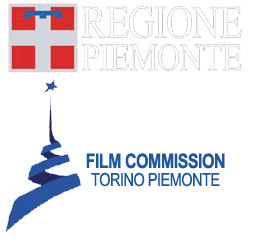

| Year | : | Available NOW! |
| Production | : | Stuffilm |
| Distribution | : | Produzioni Fuorifuoco |
| Genre | : | Documentary, Sport, Cycling, Action, Extreme |
| Duration | : | 53' |
| Film Festivals | : |
Grand Jury Prize, Ciclismo Classico Bike Travel Film Festival, Arlington (USA) Bicycle Film Festival 2017, New York (USA) Bike Days – Bicycle Film Festival, Wroclaw (Poland) Llanberis Adventure & Mountain Film Festival, Llanberis (Galles) Piemonte Movie Glocal Film Festival Turin (Italy), Filmmaker DAY, Turin (Italy) |
The impressive and fascinating story of Giuliano Calore, 77 year-old italian cyclist who descended the Stelvio at night with no bars or brakes
Giuliano Calore, born in Padova (north-east Italy) in 1938, is a living legend of extreme cycling. Some of his extraordinary exploits are now to be found in the Guinness Book of World Records, and led him to receive the coveted honour of King of Records in his field.
During the film shootings Giuliano, who is now 77 years old, has decided to suprise us achieving one last record: he wants to exploit the twists and turns of the legendary Monte Stelvio Pass, the scenic location of some of his previous astounding demonstrations of equilibrium, tenacity and inexhaustible strength, and also where some of the most famous moments in the history of cycling have taken place.
This is his most impressive challenge so far: descending from the Stelvio Pass - at an altitude of 2758 m - at night, with all of its 48 hairpin turns, on a bike with no handlebars or brakes, illuminated only by a torch and moonlight.
"48 Tornanti di Notte" tells the incredible story of this extraordinary character, with a boundless passion for cycling and a free, unconventional lifestyle.
A no-hands descent into our fears, ambitions, passions and dreams.

Since childhood, Giuliano Calore has shown his free and imaginative temperament: instinctively and with great effort, he studied both music (his father wanted him to play the piano) and cycling, a passion which he developed from his earliest years.
Thanks to his splendid physique, at the age of 14 he was doing 240 km (150 miles) in one day, on a small bike, going to see his aunt in Bologna and taste some good ice-cream.
But while cycling was just a passion, music quickly became a job which allowed him to show off his skills and and even make some money.
With his first savings, he bought a second-hand Legnano bicycle, and on this, at the age of 39, he won all three of the amateur-only races in which he took part.

Long before his name appeared in the Guinness Book of Records, Giuliano challenged local cycling clubs, accepting and offering bets on winning.
In July 1979, he went up the Stelvio Pass on his bike, without putting his hands on the handlebars.
Ten days later, he came down, again without using his hands: even though this record was not officially registered, it was his first.
Since then, he has made a succession of records (both official and unofficial) and has received honours from the world of sport, at both national and international levels.

On July 29 1981, he climbed the 48 hairpin bends of the Stelvio Pass, playing in perfect rotation four musical instruments, for a total weight of 33 kg and never stopping or getting off his incomplete bicycle.
On July 28 1983, he demonstrated all his physical strength by climbing and descending 14 of the most famous passes in the Dolomites, covering a distance of 330 km in only 13 hours.
On July 26 1984, in very bad weather, he climbed the 48 turns of the Stelvio Pass, pedalling only with his right leg, in the extraordinary time of 1 hour 36 minutes.

On July 20 1985, he came down the Stelvio in the record time of 27 minutes 1 second, reaching peak speeds of 80 km/hour.
On July 27 1986, after a heavy snowfall and at a temperature of 10°C below zero, he cycled from Prato Stelvio to Cima Coppi, a difference in altitude of 1842 m, in 2 hours 20 seconds.
On July 18 1989, he climbed the 48 bends of the Stelvio on his usual bicycle without handlebars or brakes, in the record time of 1 hour, 17 minutes, 18 seconds - even better than the previous time by Bernard Hinault in 1980, when he won the Giro d'Italia.

On June 12 1990, on a mountain bike without ice tyres, Giuliano climbed and descended 15 Dolomite passes (321 km) on icy surfaces, at temperatures between -14° and -20°C.
He slalomed between 5,040 stakes, placed 54 cm from each other, in the record time of 1 hour.
On June 4 1992, in Zurich, he stayed for 5 hours on one track, passing 6500 obstacles.
On July 21 1998, he complicated the descent from the Stelvio pass by putting barriers at the ends of the bends, consisting of two poles, like goal-posts, 1.5 m high and only 52 cm apart.

Born in Turin (Italy), 1976.
In 2007 he’s among the founders of Fotogramma 25, a video production house based in Turin, specialized in documentary and short fiction related
productions.
He works with writing and film direction and he makes feature lenght and short documentaries., music clips and commercial videos.
Filmography
“L’uomo dei Record”, 2013 - doc.
“Lunga vita al Re”, 2011 - doc.
Winner of “Piemonte Documenteur
Filmfestival - 2011”
“Gravità”, 2009 - short
Miglior Regia “Spazio Anteprima Nord-Ovest
2009”
Best short Ponte “Corti a Ponte 2010”
“La Formula del Miele”, 2009 - doc.
Produzioni Fuorifuoco is a video production house based in Bra (CN, Italy)
specialized in feature lenght and short films and documentary films.
In its filmography there are documentary movies like Barolo Boys.Storia di una Rivoluzione and Langhe Doc. Stories of heretics in the Italy of warehouses ,both in the nominees for David di Donatello prize, the Oscar for italian movies.
Produzioni Fuorifuoco has made many sport reportages and international productions, with a great experience and know-how in cycling
field, producing events like the “Marmotte” (the most important Granfondo cycling race in Europe), Granfondo Pantani and Granfondo Monte-Carlo, Giro d’Italia 2013, and producing two cycling films: L’Ultimo Chilometro and Vento. Italy by bike along the river Po

SUPPORTED BY
FILM COMMISSION TORINO PIEMONTE
PIEMONTE DOC FILM FUND
Piemonte Doc Film Fund is the first Film Fund in Italy exclusively dedicated to supporting documentaries. Active since 2007, it evolved from the initiatives taken by Regione Piemonte starting in 1996 aimed at supporting and promoting film and video production; work continued with the birth in 2000 of the FCTP Foundation.
Piemonte Doc Film Fund is:
- aimed at supporting documentaries produced by companies and film-makers based in Piemonte.
- open to Italian and foreign productions, for projects on subjects related to the local area and for projects involving local companies and professionals in the post-production stage.

MAIN SPONSOR
Rigoni di Asiago is a family-owned company from Italy that produces delicious, organically farmed jam, honey and chocolate spreads. The Rigoni family lives in the Altopiano di Asiago, a mountain plateau in North Italy famous for its sunny climate, meadows and woodlands. In this tiny corner of paradise where man still lives in direct contact with nature, honey and jam making are long-standing traditions and, as a natural consequence, the Rigoni family has mastered these crafts. One family, one business.
Rigoni di Asiago® has always prioritized innovation to achieve the healthiest and tastiest products that are both good for you
and respect nature.
The story goes back nearly 100 years ago with the Rigoni grandmother, Nonna Elisa, whose craftsmanship and love of nature so greatly influenced her family. By the 1930s Apicoltura Rigoni had already become an established household name all over Italy.

TECHNICAL SPONSOR
ALÉ is the technical apparel brand produced by A.P.G. srl, a company established in 1989 in Bonferraro di Sorgà in the province on Verona. The company counts on an average of 100 employees, all working in the factory near Verona in a production plant of 3,800 square meters with the adjoining Research Laboratory for the development and design of technical materials and solutions applied to the racing cycling clothing.
The ALE’ brand is using one of the most sophisticated and run know-how on the market, thanks to the combination of research, technology and the technical support of several champions: the commitment of APG in the professional cycling field has increased the quality standard and the product features (base layers, jerseys, bibshorts, vests, waterproof and windproof jackets, accessories) which, together, maximize the performance and the comfort of the rider.

TECHNICAL SPONSOR
LUPINE is one of the leading manufacturers for professional bike and outdoor lights.
Based in Bavaria (Germany) the company is building HIGH END LED LIGHTS since almost 25 years.
No matter if you like to go biking, skiing oder doing any other activity at night, with a Lupine you will turn the night into daylight.
All of the products are made in Germany and completly water- and shockproofed.
The quality, durability and brightness of theses lights are outstanding in industry.

TECHNICAL SPONSOR
EFFETTO MARIPOSA name homages the fascinating Chaos Science. Following what has been verified for the so called ‘nonlinear dynamic systems’ (showing sensitive dependence on initial conditions, more details here), and taking a giant leap from physics to the more familiar bicycle world, we believe that small changes can lead to major differences. This drives us to refine each new product so that it gives our customers (at least) a tiny yet clear advantage.
All Effetto Mariposa products are made in Italy as we believe, constantly verifying it, in the excellence of our suppliers and in the importance of direct contact with our roots.

WITH THE PARTICIPATION OF
BICI LAB DAVIDE CASSANI Biomechanical positioning and phisical training.
A full set of professional cycling services thanks to the experience and skills of Davide Cassani and the techniques and knowledge of Marco Gatti.
From Realization of personal training tables for a proper athletic training, to biomechanics analysis for any kind of sportsman, both amateur or professional.
Bici Lab center near Milan allows you to program your athletic season in maximum security.
Our staff will follow your workout tables from the first steps to the most important competitive performances of your life.